#Viburnum lantana
Explore tagged Tumblr posts
Text

Une cétoine dorée (Cetonia aurata) qui dort sur les nouvelles fleurs d'une viorne lantane (Viburnum lantana) // a European rose chafer sleeping on the new flowers of a wayfaring tree.
5 notes
·
View notes
Text
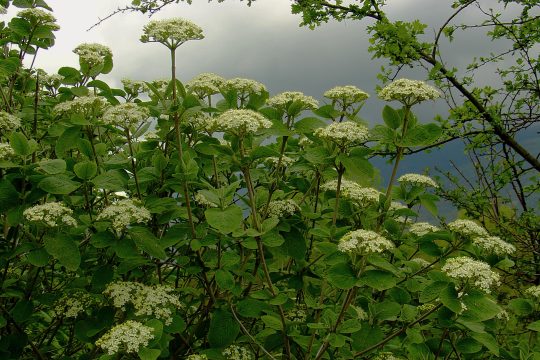
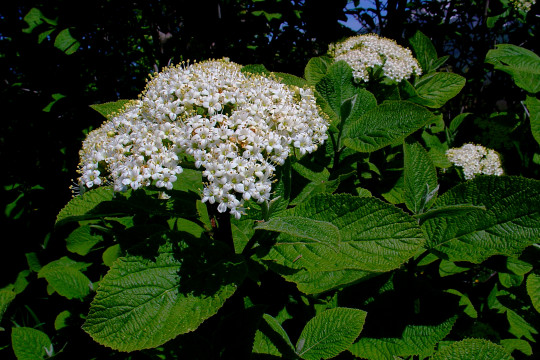

V – Viburnum lantana L. – Viburno lantana (Viburnaceae)
25 notes
·
View notes
Text
Devil's Shoestring Root In Your Practice.

Devil's Shoestring (Viburnum lantana) has a history of use in the south it is used for protection against the devil.
The use of Devil's Shoestring dates back as far as the early 19th century in the Southern States. In hoodoo the Devil's Shoestring is considered one of the most powerful protection root.

There are a few stores of how this came to be like, "One source says the root was used to tie the devil or evil spirits to trees, effectively binding them and keeping them away."
Don't Do, I it's not used to summoned Vodou loa like the internet say (don't try that)
What's It's For: Its use for protection against the devil. There's a saying 'If you don't tie your shoes you'll fall', This is the same thing. Think of this root as the shoestring on the devil's shoes, it trips the devil so he can't follow you home.
You can can activate it by saying a prayer opon it. You can add a little Holy water.
(Please!!! Don't think despite what you read online that you can burn this root or add it to a candle to rid a place of dark spiris or entities)
Creating A Protection Gris Gris Bag: This root is often used to create powerful protection amulets, bags etc. Here are the ingredients used to create your own:
Several small pieces of Devil's Shoestring root.
A red cloth bag.
Protection Oil, frankincense and myrrh, Basil, (Angelica root if preferred,) Psalm 91 or you can 23rd palms.
Last don't forget to feed you bag often you can use a protection oil like devil be gone.
#mojo bag#Gris Gris Bag#Hoodoo mojo#Voodoo bag#Devil shoestring#traditional rootwork#spiritual#like and/or reblog!#google search#traditional hoodoo#southern hoodoo#ask me anything#Devils root#reblog and follow#follow my blog#Goggle search#update post
30 notes
·
View notes
Text

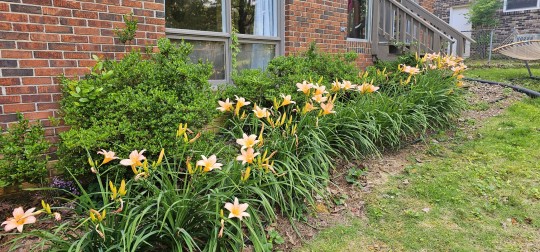


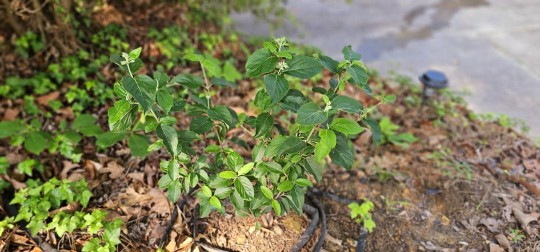
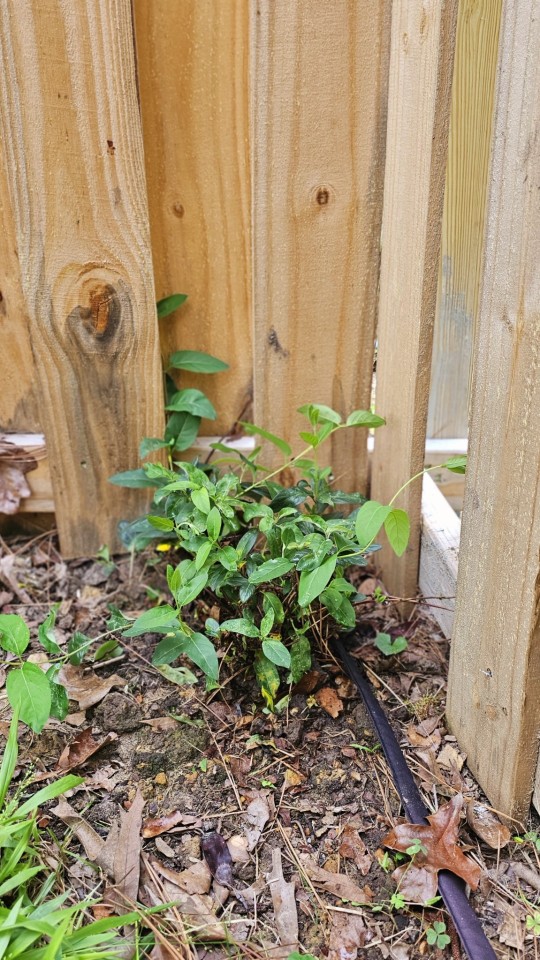

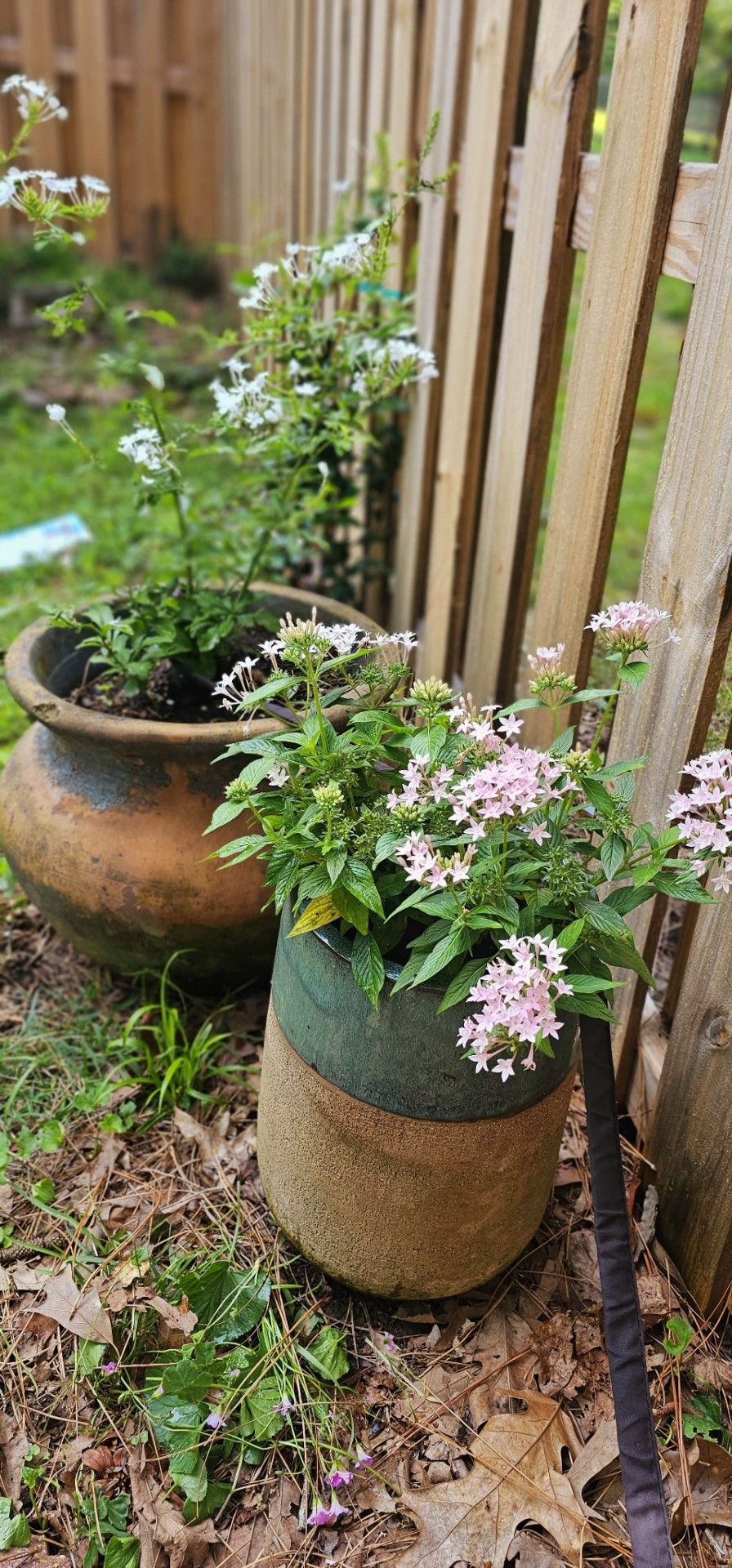
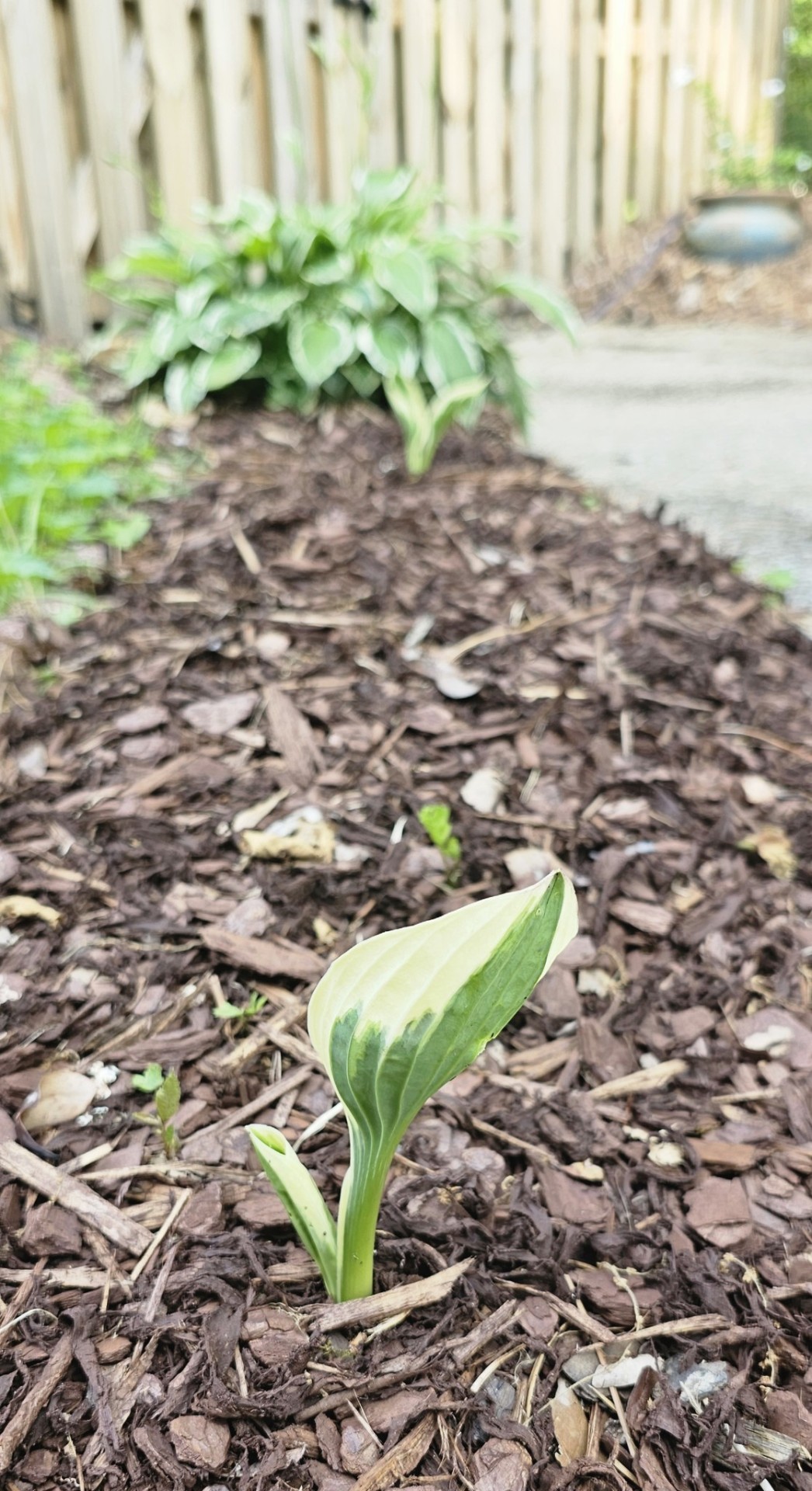

Current garden status: a solid meh, with a few highlights here and there.
In the back box garden the marigolds are doing TERRIBLY. This is the second time I've tried to plant marigolds and the second time they've looked like weedy little sticks within a few weeks. The African marigolds are doing a little bit better than the French ones, but neither is doing well. Even the salvia is pretty mediocre, and I couldn't stop that from growing last year. I don't know if they're getting eaten or if my water levels are off, but I'm giving up on the marigolds after this year. The daylilies, however, are in full bloom and having a fantastic time.
In the front, the tea olive tree looks pretty shabby this year after a late frost killed off its first attempt at leaves (and possibly some limbs--I'll need to see where the leaves come in next year). The handful of tiny hostas has struggled to do anything three years running, and the azaleas never did put out a decent first bloom. The hydrangeas are at least alive, though I won't be getting any blooms this year. The white hydrangea in the back looks fuller than it has the last two years, so hopefully I'll get some blooms next year. The lantana in the brick garden is growing magnificently, just in the wrong direction! I want flowers, not big fat green leaves! I did discover today that I've accidentally been half-dosing my fertilizer, so I gave it a double dose and hopefully that will promote some bloom growth over the next couple of weeks.
The viburnum seems to be having a great time; I'm not sure what those spindly little mint green bits on the leaves are, but I'm hoping they might be baby blooms? It's certainly doing better than last year's roses. The honeysuckle in the corner of the fence had a catastrophic first month where I kind of accidentally totally forgot to water it ever, but I've got a hose on it now and it's finally putting out runners, so hopefully I didn't torch its chances too badly.
At the end of the driveway the jasmine is off to the races with long runners crawling all over the fence. The pentas are blooming pink again and the plumbago is beginning to fill out nicely. I can't figure out what's going on with the little arched bed at the end of the driveway; I have five hostas planted there, all planted about the same time, all planted about the same depth. However, one has been up and full for a month, two have just decided to spit out leaves in the last week, and I have no idea where the other two are. A little hosta mystery...a hystery, if you will.
Plus an Ophelia, just because.
29 notes
·
View notes
Text
0 notes
Text
Florida-Friendly Plants and Landscaping Ideas for Your Garden Design
Creating a beautiful and sustainable garden in Florida requires careful planning and selection of plants that thrive in the unique climate of the Sunshine State. Florida-friendly plants not only enhance the aesthetic appeal of your garden but also contribute to water conservation and support local wildlife. In this comprehensive guide, we will explore various Florida-friendly plants and landscaping ideas to help you design a stunning and eco-friendly garden.
Understanding Florida's Climate and Soil
Florida's climate varies from subtropical in the north to tropical in the south. The state experiences high humidity, frequent rain, and warm temperatures year-round, making it a haven for diverse plant life. Understanding the local climate and soil conditions is crucial for selecting the right plants for your garden.
Florida spans USDA hardiness zones 8-11. Knowing your specific zone helps determine which plants will thrive in your area. Florida soils range from sandy to clayey. Conduct a soil test to understand its pH level and nutrient content, which will guide your plant selection and soil amendment practices.
Benefits of Florida-Friendly Landscaping
Native plants are adapted to local rainfall patterns, reducing the need for supplemental watering.
Florida-friendly plants typically require less fertilizer, pesticides, and care compared to non-native species.
Native plants provide food and shelter for local wildlife, supporting biodiversity.
Deep-rooted native plants help stabilize the soil and prevent erosion.
Choosing Florida-Friendly Plants
Selecting the right plants is the cornerstone of a successful Florida-friendly garden. Here are some top ch
oices:
Trees
1. Southern Live Oak (Quercus virginiana): A majestic, long-lived tree that provides shade and supports wildlife.
2. Cabbage Palm (Sabal palmetto): Florida's state tree, known for its resilience and minimal maintenance.
3. Magnolia (Magnolia grandiflora): Offers beautiful, fragrant blooms and glossy leaves, ideal for ornamental use.
Shrubs
1. Saw Palmetto (Serenoa repens): A hardy, drought-tolerant shrub with fan-shaped leaves and white flowers.
2. Firebush (Hamelia patens): Attracts hummingbirds and butterflies with its vibrant red flowers.
3. Walter's Viburnum (Viburnum obovatum): A versatile shrub that can be used for hedges or as a specimen plant.
Creating a Florida-friendly garden involves more than just plant selection. Incorporate these landscaping ideas to enhance the beauty and sustainability of your garden:
Edible Landscaping
Combine aesthetics and functionality by incorporating edible plants into your garden design.
Fruit Trees: Plant fruit trees such as citrus, avocado, and fig, which thrive in Florida's climate.
Herb Gardens: Create an herb garden with rosemary, basil, oregano, and mint.
Vegetable Beds: Design raised beds or container gardens for growing vegetables like tomatoes, peppers, and leafy greens.
Butterfly Gardens
Attract butterflies and other pollinators by planting a variety of nectar-rich flowers and host plants.
Nectar Plants: Include flowering plants such as lantana, pentas, and butterfly bush.
Host Plants: Plant milkweed, passionflower, and fennel to provide food for caterpillars.
-Sheltered Areas: Create sheltered spots with shrubs and trees where butterflies can rest and lay eggs.
Practical Tips for Maintaining a Florida-Friendly Garden
Maintaining a Florida-friendly garden requires ongoing care and attention. Here are some practical tips to keep your garden healthy and thriving:
1. Water Wisely: Water plants early in the morning or late in the evening to reduce evaporation. Use rain barrels to collect and store rainwater for irrigation.
2. Fertilize Sparingly: Use organic fertilizers and compost to enrich the soil. Avoid over-fertilizing, which can harm plants and pollute waterways.
3. Prune Regularly: Prune plants to remove dead or diseased branches and encourage healthy growth. Follow proper pruning techniques to avoid damaging plants.
4. Monitor Pests: Keep an eye out for pests and diseases. Use integrated pest management (IPM) techniques, such as introducing beneficial insects and using natural remedies, to control pests.
5. Mulch: Apply mulch to conserve soil moisture, suppress weeds, and improve soil health. Replenish mulch as needed.
6. Weed Control: Regularly remove weeds to prevent them from competing with your plants for nutrients and water. Use mulch and landscape fabric to reduce weed growth.
Inspiring Florida-Friendly Garden Designs
To inspire your own garden design, here are some examples of beautiful and sustainable Florida-friendly gardens:
1. Tropical Paradise: Create a lush, tropical garden with a mix of palms, ferns, and colorful flowering plants. Add a water feature, such as a small pond or fountain, to enhance the tranquil atmosphere.
2. Coastal Retreat: Design a coastal-themed garden with salt-tolerant plants like sea oats, beach sunflower, and dune grass. Incorporate driftwood, shells, and a sandy path to complete the look.
3. Woodland Oasis: Transform a shady area into a woodland garden with native trees, shrubs, and groundcovers. Add a winding path, benches, and a birdbath to create a peaceful retreat.
4. Butterfly Haven: Plant a variety of nectar-rich flowers and host plants to attract butterflies and pollinators. Include a mix of colors and heights to create visual interest and provide food and shelter for butterflies.
5. Mediterranean Escape: Use drought-tolerant plants like lavender, rosemary, and olive trees to create a Mediterranean-inspired garden. Incorporate terracotta pots, gravel paths, and a seating area for a touch of elegance.
Conclusion: Creating Your Florida-Friendly Garden
Designing a Florida-friendly garden is a rewarding and sustainable way to enhance your outdoor space. By selecting the right plants and incorporating thoughtful landscaping ideas, you can create a garden that thrives in Florida's unique climate while conserving resources and supporting local wildlife. Whether you choose to create a tropical paradise, a coastal retreat, or a butterfly haven, your Florida-friendly garden will provide beauty and enjoyment for years to come.
0 notes
Photo

Wayfarer - Viorne lantane - Viburnum lantana 🌺
Viburnum lantana
[2018/05/02]

#optimisticgalaxydreamland#mijardinprimavera2018#vimory#wayfarer#viorne lantane#lantane#viorne mancienne#mancienne#cochene#viorne flexible#viburnum lantana#tree#arbre#arbol#flowers#fleurs#flores#fruits#frutos#baies#garden#jardin#organic garden#organic#jardinbio#jardin bio#jardin biologique#biologique#jardin organico#organico
5 notes
·
View notes
Text


When you look up thoughts on the Orange side and remember that the flower representation is an orange Lantana flower things get interesting.
Name meaning: The genus name “lantana” comes from the Latin name of a species plant Viburnum lantana, a wayfaring tree which it resembles superficially.
Flower symbolism: Lantana represents: Rigor and Severity “I am Unyealding”
But Logan is our stoic character you say. What if Orange side is even worse, or, OR he had made a complete 180 and is a chaotic cryptid if the 07734 is anything to go by
“Lantana is mentioned in folklore as being of help in snakebite cases” 👀
#Sanders Sides#Orange side#orange side theory#Theories#i'm not good at those but idk#this might have already been said#but i can't remember anyone figuring out the flower#when the t-shirt was made and put on Thomas's shop#ignore the fox
451 notes
·
View notes
Text
Monday 30 September 1839 Travel Journal
7 ½
12 ¾
very fine morning F61 ¼° now at 8 55/.. am and Mrs. Wilsons’ F. 50° outside looking into the court (west from the sun) breakfast about 9 to near 10 – wrote note and enclosed it with Lord S. de R-‘s letter to Mr. Bayley hoping to have the pleasure of seeing him tomorrow evening (vide copy at the index end of Journal book) and put note and letter undercover to ‘Edward Bayley Esquire English Quay’ – then got out letter of credit and 4 circulars nos. 2589, 2590, 2591, 2592 – all which took till 10 ¾ - to the Hermitage sent up my card – Whitaker brought it back – Labrinsky out - .:. no catalogue – then to the bank – ¾ hour there – till 1 ¼ - got £50 on the letter of credit – and 10 minutes upstairs with Mrs. Hodson nothing against circulars of more than a year old – Mr. Beard not arrived there at 1 55/.. sent in my card to professor Fischer – went in – very civil – he walked about with us – recommends Sweets Hortus [Londinesis] Lawdens’ not quite so good –
Robinia caragana , or caragana arborescens the hardy acacia that forms the hedges here
Crataegus Sanguinea the hedge near Fischers’ house – good – the hawthorn does not do well here
verbena aublatia (Chilean or [?] verbena pretty pink flower with leaf like geranium)
Platunia [Petunia] violacia pretty purpleish flower small
Eleagnus [Elaeagnus] argentea (North America) the white olive-like shrub the 2 American shrubs in the walk at Shibden that Throp did not know the name of, Eleagnus [Elaeagnus]?
Hippophae rhamnoides (Siberia) like a narrow leaved white willow. 30° degrees of frost does not kill
Populus suaveolens (Siberia) rare here – sweet agreeable strong smell on pinching the bed – handsome whiteish tree.
P. Laurifolia also sweet smelling but branches angular not round like P. Suaveolens
did not see this in the garden
both of these 2 rare
2 best European hedges are sow holly too slow growth Hornbeam for tall Hawthorn for lower
SH:7/ML/TR/14/0025
Betula Socolovii [Sokolov]
Rhamnus Cartrarticus [Catharticus]
Cotoneaster melanocarpa (Siberia)
Cytisus supinus variety from Mt. Oural.
Pinus picea [pinea] the sapin of the French and silver fir of the English
P. Pichte or Abies Sibirica
P. abies of Linnaeus is the English spruce fir with harrying cones
P. picea [Pinea] of Linnaeus is the Silver fir with upright fruit or cones –
Laryx [Larix] microcarpa Siberian larch, very small cones hardly an inch long –
Cornus alba, the red dogwood with white berries.
Pinus cembra (like the Weymouth pine but leaves more coarse) – not whitish – and 5 from one sheath like the Weymouth pine Go to Calomensk gardens of Peters’ palace near Moscow to see P. Cimbra [cembra] and see the large P.C. at [Astankemal] count Sheromatieffs’ near Moscow
Lonicera tartarica [tatarica] common here
Viburnum opulus
Sambucus racemosus. Elder with red berrei never attacked by insects – very pretty – common (at the Pyrenees and) here –
Lonicera microphylla from Mt. Altai [Altaj].
September Monday 30
Acer platanoides (Norway maple)
Acer tartaricum (tartarica?) leaves something like the hornbeam - but seeds like sycamore seeds –
Potentilla frutescens (common in England)
Euonymus nanus dark red brown flower – Every [?] and hardy.
Robinia or Caraganna [Caragana] frutescens. Bloodacina of Thorp?
Symphoria racemosa, snowberry.
Symphoricarpos, symphorine (vide Mérat)
Viburnum latana [lantana] (bottom of old garden at Shibden)
Spiraea opslifolia north America
S. Sorbifolia
S. Silicifolia
Siberia
Rubus odoratus, the broad leaved raspberryish-like plant.
Betula caprinifolia North America hard
Flora altaica of Ledebourg [Ledebour] 4 vols. 8vo.
Spiraea ulnifolia [ulmifolia]
Crataegus punctata, North America –
Betula latifolia North America
Spiraea luvigata or Altaica
Rosa Esccularis [acicularis], Siberian (like our rose)
Taxtodrium Sempervirens a kind of Cypress in the Russian settlement in Calefornia, one of these trees cut into 1600 deals of 6in. broad and 12 to 14ft. long – took 13 people to span it – danced [unecquadrille –une quadrille] Française on the stool –
SH:7/ML/TR/14/0026
September Monday 30
Robinia or Caragana Gubata [Jubata] or camels’ tail from the south east of lake Baikal [Bajkal] – rather cactus-like low plant fine large sulphur-yellow flowers – very scarce in England –
came away at 3 ¼ - to be there at 2pm tomorrow
at the England magazine at 4 10/.. – Mr. Buchanan there – then to Dixons for Heads’ English Russian grammar for A-
home at 4 ¾ - dressed – dinner before 6 – afterwards reading over the 3 newspapers and made the extract as under – till Mr. Nouvel came at 8 ½ -
3 Globes of 11, 12, and 13th inst. in that of the 11th. p. 3 col. 1 there is a notice of letter received by Mr. Faraday (and inserted in the London and Edinburgh philosophical magazine) from M. H. Jacobi dated St. Petersburg – ‘In the application of Electro-magnetism to the movement of machines, the most important obstacle always has been the embarrassment and difficult manipulation of the battery. this obstacle exists no longer’........ experiments this autumn on the Neva ‘with a ten-oared shallop, furnished with paddle-wheels, which even put in motion by an electro-magnetic machine’ from the experience of last year and this year ........ ‘to produce the force of one horse (steam engine estimation), it will require a battery of 20sq. ft. of platina distributed in a convenient manner, but I hope that eight to ten square ft. will produce the effect’
on propelling machinery by an electromagnetic battery
September Monday 30
had M. Nouvel from 8 ½ to near 10 – paid him 9 lesson (from Thursday 19th instant) at 5/. = 45/. + 5/. gave him over – he has not heard of Mr. Jacobis’ experiments (vid. last page) but mentioned a Frenchman being come over to Shoe horses without nails – I supposed on the principle of silvering mirrors – N- supposed it was by means of cement – afterwards tea, and wrote out the above of today till 11 ¼ - had Grotza – rainy evening at 8 ½ when N- came
Betual nana not in the botanic garden
7 notes
·
View notes
Text





Plant of the Day
Thursday 23 April 2020
In the local hedgerows the native shrub Viburnum lantana (wayfaring tree) is flowering. These white flowers will provide displays of red berries in the autumn. A hunter’s quiver from around 4,000–3,500 BC, found in the Austrian Alps, contained arrows made from the stems of this deciduous shrub as they were long, straight and strong with a suitable diameter for arrow shafts.
Jill Raggett
#viburnum#wayfaringtree#deciduousshrub#deciduous#whiteflowers#native#hedgerows#plants#shrub#writtledesign#mhort#horticulture#wildplants#essex#countryside
376 notes
·
View notes
Text

Viburno lantana (Viburnum lantana L., Viburnaceae) ai margini del bosco
18 notes
·
View notes
Text
Summer Bloom Spotlight: Lantana

The Lantana plant is found in the tropical areas of South Africa and America. It is an evergreen shrub that produces clusters of many flowers on a tubular shape with four petals each, that change colour as its blooming season progresses.
Introduced to many places aside from where they are natively found, the Lantana plant is actually an invasive species; it will spread quickly, take over the other plants in the area and will not allow anything else to grow in the same environment. This can cause issues as the phenomenon can cause animals to have to migrate from their habitats as Lantana leaves can actually be poisonous to them. To go with this, a Lantana plant can produce up to 12,000 seeds a year.
The plant is actually named after the Latin species plant named “Viburnum lantana” (more commonly known as a Wayfarer tree) which it vaguely resembles.
In terms of symbolism, a Lantana is said to be a sign of severity and rigor.
The Lantana make you want to make something? Let us know, and consider signing up to take part in the Summer Blooms Zine when applications open on April 20th!
[image credit: Martin LaBar]
#summerbloomszine#zine#new zine#floral zine#floral#flower#flowers#flower language#flower symbolism#flower meanings#lantana#latanas#summerbloomspotlights#zine ideas#zine inspiration#inspiration#open zine#writing prompts#art prompts
5 notes
·
View notes
Photo

Long-tailed tit (Aegithalos caudatus) on the twig of a foliating wayfaring tree (Viburnum lantana)
Tennengau, Salzburg, Austria
15 notes
·
View notes
Text










Spring planting, part one! I'm only partially using this as an active distraction against a secondary new, even worse problem discovered with my new trees. At least with these it won't matter if they die in a few weeks!
This year I decided to go red, gold, and white over last year's purples and oranges. In the back box garden I planted white vista salvia, yellow African marigolds to complement the gold azalea, and French "strawberry blonde" marigolds in front, as they'll stay shorter. I also replaced the rosemary bush, which perished in the snap freeze we got last year along with so many others. :( The heritage hostas are already up and doing great, and the fig is finally putting out a new round of leaves after we had one last cold snap early April.
In the front brick garden I planted yellow and white lantana with red celosia as accents. My celosia last year went insane with joy, so I'm hoping to get a big overflow here this year too. No latent polka dots have come up yet, which means I might have finally torn them all out!
I also went into some bushes this year. In the front, I've planted a baby Chinese snowball viburnum to mark the gravesites of last year's ill-fated roses. In the backyard where the hickory was torn down last year, I've put in a Professor Sargent camellia which should do well in that sheltered area and hopefully won't mind the acidic soil too much. In the front in a very naked area I've wanted to fill out for years, I've put in a Confederate jasmine vine that should hopefully take over quite quickly, and a Hall's honeysuckle vine about twelve feet further down the same section of fence, which should have beautifully fragrant whitish blooms to match the jasmine. I look forward to discovering who'll win the scent war.
In one of my pots I planted pink pentas because they're just so stinking cute and they did beautifully last year. And a pair of red and white geraniums to match my seats on the back deck, just because I can.
25 notes
·
View notes
Text
0 notes
Photo










1 Papaver rhoeas
2) Pyrus malus
3) Glaucium luteum
4) Nicandra physaloides
5) Malva alcea
6) Eryngium maritimum
7) Nymphaea alba
8) Orchis mascula
9) Epilobium angustifolium
10) Viburnum lantana.
Illustrations by Christiaan Sepp taken from Flora Batava (1822) by Jan Kops (1765–1849) .
www.BioLib.de
Wikimedia
59 notes
·
View notes